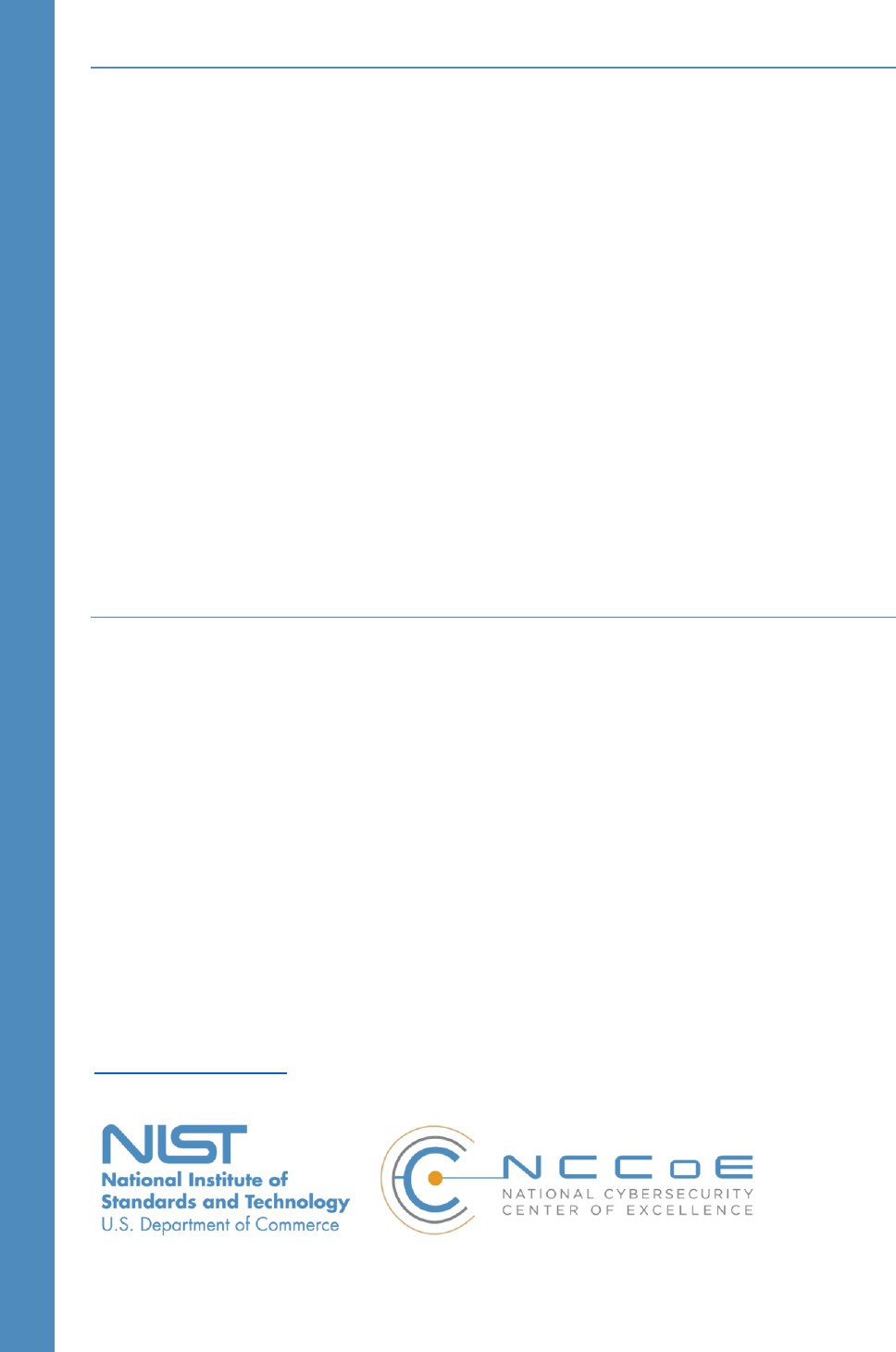
SECURING
TELEHEALTH
REMOTE PATIENT
MONITORING
ECOSYSTEM
Cybersecurity for the Healthcare Sector
Jennifer Cawthra
National Cybersecurity Center of Excellence
National Institute of Standards and Technology
Ronnie Daldos
Kevin Littlefield
Sue Wang
David Weitzel
The MITRE Corporation
May 2019
hit_nccoe@nist.gov
PROJECT DESCRIPTION

Project Description: Securing Telehealth Remote Patient Monitoring Ecosystem 2
The National Cybersecurity Center of Excellence (NCCoE), a part of the National Institute of
Standards and Technology (NIST), is a collaborative hub where industry organizations,
government agencies, and academic institutions work together to address businesses’ most
pressing cybersecurity challenges. Through this collaboration, the NCCoE develops modular,
easily adaptable example cybersecurity solutions demonstrating how to apply standards and
best practices using commercially available technology. To learn more about the NCCoE, visit
http://www.nccoe.nist.gov. To learn more about NIST, visit http://www.nist.gov.
This document describes a particular problem that is relevant across the healthcare sector.
NCCoE cybersecurity experts will address this challenge through collaboration with members of
the healthcare sector and vendors of cybersecurity solutions. The resulting reference design will
detail an approach that can be used by healthcare delivery organizations (HDOs).
ABSTRACT
HDOs are leveraging a combination of telehealth capabilities, such as remote patient monitoring
(RPM) and videoconferencing, to treat patients in their homes. These modalities are used to
treat numerous conditions, such as patients battling chronic illness or requiring postoperative
monitoring. As use of these capabilities continues to grow, it is important to ensure that the
infrastructure supporting them can maintain the confidentiality, integrity, and availability of
patient data, and to ensure the safety of patients. It is also important to ensure the privacy of
patient data by considering the privacy engineering objectives of predictability, manageability,
and disassociability of data. The goal of this project is to provide a practical solution for securing
the telehealth RPM ecosystem. The project team will perform a risk assessment on a
representative RPM ecosystem in the laboratory environment, apply the NIST Cybersecurity
Framework and guidance based on medical device standards, and collaborate with industry and
public partners. This project will focus on the diagnostic aspects of remote patient monitoring.
The project team will also create a reference design and a detailed description of the practical
steps needed to implement a secure solution based on standards and best practices. This
project will result in a freely available NIST Cybersecurity Practice Guide.
KEYWORDS
application programming interface; API; application security; cybersecurity; data privacy; data
privacy and security risks; health delivery organization; HDO; remote patient monitoring; RPM;
telehealth; user interface; UI
DISCLAIMER
Certain commercial entities, equipment, products, or materials may be identified in this
document in order to describe an experimental procedure or concept adequately. Such
identification is not intended to imply recommendation or endorsement by NIST or NCCoE, nor
is it intended to imply that the entities, equipment, products, or materials are necessarily the
best available for the purpose.

Project Description: Securing Telehealth Remote Patient Monitoring Ecosystem 3
TABLE OF CONTENTS
1 Executive Summary ..........................................................................................................4
Purpose ...................................................................................................................................... 4
Scope.......................................................................................................................................... 4
Assumptions .............................................................................................................................. 5
Background ................................................................................................................................ 5
2 Scenario: Remote Patient Monitoring and Video Telehealth..............................................5
3 High-Level Architecture ....................................................................................................6
Component List .......................................................................................................................... 8
Components for RPM Technologies ........................................................................................ 8
Components for Remote/Patient Home Environment ........................................................... 8
Components for HDO Environment ........................................................................................ 9
RPM Ecosystem Actors .......................................................................................................... 10
Desired Security Characteristics ............................................................................................ 10
4 Relevant Standards and Guidance .................................................................................. 12
General Cybersecurity and Risk Management ........................................................................ 12
Cybersecurity/Technology-Related Standards ........................................................................ 12
Other Relevant Regulations, Standards, and Guidance (Healthcare/Medical Devices) ......... 13
5 Security Control Map ..................................................................................................... 14
Appendix A References ....................................................................................................... 26
Appendix B Acronyms and Abbreviations ............................................................................ 27

Project Description: Securing Telehealth Remote Patient Monitoring Ecosystem 4
1 EXECUTIVE SUMMARY
Purpose
This document defines a National Cybersecurity Center of Excellence (NCCoE) project focused on
providing guidance and a reference architecture that address security and privacy risks to
stakeholders leveraging telehealth and remote patient monitoring (RPM) capabilities.
Health delivery organizations (HDOs) are leveraging a combination of telehealth capabilities,
such as RPM and videoconferencing, to treat patients in their homes. Traditionally, patient
monitoring systems have been deployed in healthcare facilities, in controlled environments.
RPM, however, is different, in that monitoring equipment is deployed in the patient’s home,
which traditionally does not offer the same level of cybersecurity or physical-security control to
prevent misuse or compromise. These RPM devices may use application programming interfaces
(APIs) or rule engines developed by third parties that act as intermediaries between the patient
and the healthcare provider. Telemetry data from the RPM device may be displayed through a
user interface (UI) for visual review.
It is important to review the end-to-end architecture to determine whether security and privacy
vulnerabilities exist and what security controls are required for proper cybersecurity of the RPM
ecosystem and to protect individuals’ privacy.
While the field of telehealth is broad, a focus on the application of telehealth modalities
involving telehealth platform providers that use videoconferencing capabilities and leverage
cloud and internet technologies coupled with RPM mechanisms provides the NCCoE with an
opportunity to develop practical recommendations. The intended audience for these
recommendations is HDOs, patients, and independent healthcare providers employing RPM
products and services.
This project will result in a publicly available National Institute of Standards and Technology
(NIST) Cybersecurity Practice Guide, a detailed implementation guide of the practical steps
needed to implement a cybersecurity reference design that addresses this challenge.
Scope
The objective of this project is to demonstrate a proposed approach for improving overall
security in the RPM environment. This project will address cybersecurity concerns about having
diagnostic monitoring devices in patients’ homes, including the home network and
patient-owned devices such as smartphones, tablets, laptops, and home computers. This project
will also identify cybersecurity measures that HDOs may consider when offering RPM with video
telehealth capabilities. A proposed component list is provided in the High-Level Architecture
section (Section 3).
Telehealth solutions are, by nature, an integration of disparate parties and environments.
However, out of scope for this project are the risks and concerns specific to the third-party
provider (i.e., the telehealth platform provider) that may offer services that are cloud-hosted or
that provide functionality through a software-as-a-service model. Additionally, this project does
not evaluate monitoring devices for vulnerabilities, flaws, or defects. This project will focus on
the medical diagnostic aspects of remote patient monitoring. The NCCoE does not evaluate
medical device manufacturers.

Project Description: Securing Telehealth Remote Patient Monitoring Ecosystem 5
While telehealth solutions may include software development kits (SDKs) and APIs, this project
will not explore the secure software development practice in detail.
Assumptions
• Patient monitoring devices (e.g., blood pressure cuffs, body mass index [BMI]/weight
scales) may leverage commercially available communications (e.g., Bluetooth, Wi-Fi/
wireless, or cellular) to transmit telemetry data to the home monitoring application.
• The home monitoring application is a provider-managed solution that may be installed
on a provider-managed or unmanaged patient-owned mobile device.
• The home monitoring application may transmit telemetry data to the remote
monitoring server via a cellular or Wi-Fi connection.
• The patient is in his or her home during the telehealth interaction (e.g., video, patient
monitoring).
• Video telehealth interactions may leverage patient-owned devices or devices provided
by the primary care facility.
• Clinicians participating in telehealth interactions use secured communications methods.
Background
The NCCoE recognizes the important role that telehealth capabilities play in delivery of
healthcare and has commenced research in telehealth, specifically RPM technologies. As the
growth and popularity of telehealth capabilities accelerate, it is critical to evaluate the security
and privacy risks associated with each identified use case. Once identified, security controls can
be implemented to mitigate the security and privacy risks to the patient and other stakeholders.
The demand for telehealth capabilities continues to grow as stakeholders (e.g., patients;
providers; payers; federal, state, and local governments) see the benefits that telehealth brings
to improving the quality of patient care and the accessibility to healthcare. As an example of
telehealth capabilities growth, a 2017 Foley Telemedicine and Digital Health Survey found that,
in just three years, respondents went from 87 percent not expecting most of their patients to be
using telehealth services in 2017 to 75 percent offering or planning to offer telehealth services
to their patients [1].
This project examines RPM as a medically prescriptive course that an HDO implements to
manage a condition outside a healthcare facility. This differs from discretionary use of personal
healthcare technology that individuals may use in improving their fitness.
2 SCENARIO: REMOTE PATIENT MONITORING AND VIDEO TELEHEALTH
The scenario considered for this project involves RPM equipment deployed to the patient’s
home [2]. RPM equipment that may be provided to patients includes devices for blood pressure
monitoring, heart rate monitoring, BMI/weight measurements, and glucose monitoring. An
accompanying application may also be downloaded onto the patient-owned device and synced
with the RPM equipment to enable the patient and healthcare provider to share data. Patients
may also be able to initiate videoconferencing and/or communicate with the healthcare
provider via email, text messaging, chat sessions, or voice communication. Data may be
transmitted across the patient’s home network and routed across the public internet. Those
transmissions may be relayed to a telehealth platform provider that, in turn, routes the
communications to the HDO. This process brings the patient and healthcare provider together,
allowing for delivery of the needed healthcare services in the comfort of the patient’s home.

Project Description: Securing Telehealth Remote Patient Monitoring Ecosystem 6
The following functions may be evaluated during this project:
• connectivity between monitoring devices and applications deployed to mobile devices
(e.g., smartphones, tablets) or to patient workstations (e.g., laptops, desktops)
• ability for the application to transmit monitoring data to the HDO
• ability for the patient to initiate requests or notifications
• ability for the patient to interact with a point of contact to initiate care (This ability may
be through a chat box, interacting with a live individual via videoconference.)
• ability for the patient to receive medical alerts and notifications
• ability for the monitoring data to be analyzed by the HDO to spot trends and to issue
possible alerts to the clinician if the data suggests that there is an issue with the patient
• ability for the patient monitoring data to be shared remotely with the electronic health
record system
• ability for the patient to initiate a videoconference session with a care team member
through the telehealth application
• ability for the HDO to update the security functionality of the remote monitoring device
• ability for the patient to receive and apply security updates and patches for applications
• ability for the HDO to connect to the remote monitoring device to obtain direct patient
telemetry data
• ability for the HDO to connect to the remote monitoring device to update the
monitoring device configuration
3 HIGH-LEVEL ARCHITECTURE
This project examines what happens when remote patient monitoring equipment is hosted in a
patient’s home environment. Patients who use monitoring devices in their home are able to
forward the monitoring data to their physician at regular intervals and can initiate audio and
video communication to their care team providers. Physicians receive patient data through the
telehealth platform with equipment that captures the patient data and allows real-time audio
and video interaction with the patient. This project identifies controls in the HDO environment
with a focus on patient home-deployed controls.
For this project, two separate environments will be constructed: the HDO environment and the
patient home setting. Figure 3-1 shows the high-level architecture for RPM that uses a third-
party telehealth platform provider. The high-level architecture addresses the scope noted in
Section 1. The component list and the desired security characteristics are listed in the
subsections that follow.
The HDO infrastructure would adopt the deployments used in previous NCCoE healthcare
projects [3], [4] that implement network zoning and layered defenses aligning to NIST
Cybersecurity Framework functions. As this project develops, identity and access management
(IdAM) controls will be identified. IdAM may be limited based on selected technologies, and
those limitations are to be determined.
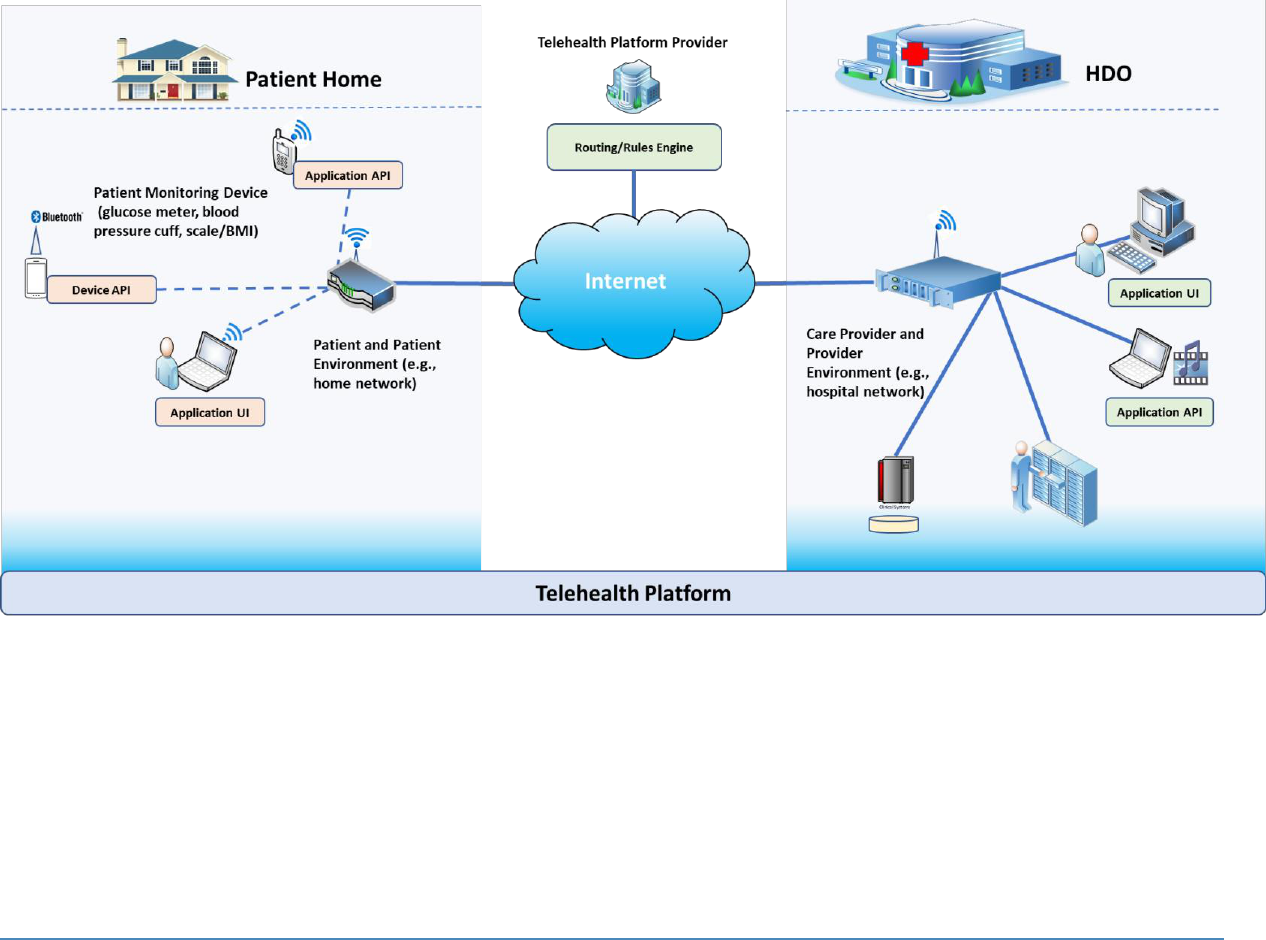
Project Description: Securing Telehealth Remote Patient Monitoring Ecosystem 7
Figure 3-1: High-Level Architecture

Project Description: Securing Telehealth Remote Patient Monitoring Ecosystem 8
Component List
The NCCoE has a dedicated lab environment that includes the following features:
• network with machines using a directory service
• virtualization servers
• network switches
• remote access solution with Wi-Fi and a virtual private network (VPN)
Collaboration partners (participating vendors) may provide specialized components and
capabilities to realize this solution, including, but not limited to, those listed in the subsections
below.
Components for RPM Technologies
• telehealth platform–a solution that enables data and communication flow from the
patient monitoring device to the home monitoring device to the care providers
o internet-based communications
▪ transmission of telemetry data
▪ videoconference
▪ audioconference
▪ email
▪ secure text messaging
o routing/triage functionality–The telehealth platform enables patients to identify
an appropriate, networked team of care providers.
o SDKs and APIs that enable telehealth applications to interface with patient
monitoring devices
o patient monitoring devices that send telemetry data via the home monitoring
device
▪ blood pressure
▪ heart monitoring
▪ BMI/weight scales
▪ other telemetry devices, as appropriate
o home monitoring device (e.g., specialized mobile application, stand-alone
device) that transmits telemetry data to the telehealth platform and provides
video connectivity
Components for Remote/Patient Home Environment
• personal firewall–an application that controls network traffic to and from a computer,
permitting or denying communications based on a security policy
• wireless access point router–a device that performs the functions of a router and
includes the functions of a wireless access point
• endpoint protection (anti-malware)–a type of software program designed to prevent,
detect, and remove malicious software (malware) on information technology (IT)
systems and on individual computing devices
• mobile device–a multimodal, small form factor, communications mechanism that has
characteristics of computing devices that include wireless network capability, memory,

Project Description: Securing Telehealth Remote Patient Monitoring Ecosystem 9
data storage, and processing. The device may provide real-time audio, video, and text
communications as well as support email, web browsing, and other internet-enabled
methods to interact with locally and remotely stored information and systems.
• modem–a device that provides a demarcation point for broadband communications
access (e.g., cable, digital subscriber line [DSL], wireless, long-term-evolution [LTE], 5G)
and presents an Ethernet interface to allow internet access via the broadband
infrastructure
• wireless router–a device that provides wireless connectivity to the home network and
provides access to the internet via a connection to the cable modem
• telehealth application–an application residing on a managed or unmanaged mobile
device or on a specialized stand-alone device and that facilitates transmission of
telemetry data and video connectivity between the patient and HDO
• patient monitoring device–a peripheral device used by the patient to perform
diagnostic tasks (e.g., measure blood pressure, glucose levels, or BMI/weight) and to
send the telemetry data via Bluetooth or wireless connectivity to the telehealth
application
Components for HDO Environment
• network access control–discovers and accurately identifies devices connected to wired
networks, wireless networks, and VPNs and provides network access controls to ensure
that only authorized individuals with authorized devices can access the systems and
data that access policy permits
• network firewall–a network security device that monitors and controls incoming and
outgoing network traffic, based on defined security rules
• intrusion detection system (IDS) (host/network)–a device or software application that
monitors a network or systems for malicious activity or policy violations
• intrusion prevention system (IPS)–a device that monitors network traffic and can take
immediate action, such as shutting down a port, based on a set of rules established by
the network administrator
• VPN–a secure endpoint access solution that delivers secure remote access through
virtual private networking
• governance, risk, and compliance (GRC) tool–automated management for an
organization’s overall governance, enterprise risk management, and compliance with
regulations
• network management tool–provides server, application-management, and monitoring
services, as well as asset life-cycle management
• endpoint protection and security–provides server hardening, protection, monitoring,
and workload micro-segmentation for private cloud and physical on-premises
data-center environments, along with support for containers, and provides full-disk and
removable media encryption
• anti-ransomware–helps enterprises defend against ransomware attacks by exposing,
detecting, and quarantining advanced and evasive ransomware
• application security scanning/testing–provides a means for custom application code
testing (static/dynamic)

Project Description: Securing Telehealth Remote Patient Monitoring Ecosystem 10
RPM Ecosystem Actors
• patients–individuals being monitored in their home settings
• HDO clinicians–physicians, nursing staff, and medical technicians in the HDO
environment
• independent healthcare providers–those who may need to access patient information
for patient-initiated care and diagnostic requests
• support/maintenance staff–technical staff in the HDO facility who maintain the HDO-
resident components and the HDO-managed components in the patient’s home
environment
Desired Security Characteristics
The primary security functions and processes to be implemented for this project are listed
below and are based on NIST Cybersecurity Framework Version 1.1.
IDENTIFY (ID)–These activities are foundational to developing an organizational understanding
to manage risk.
• asset management–includes identification and management of assets on the network
and management of the assets to be deployed to equipment. Implementation of this
category may vary depending on the parties managing the equipment. However, this
category remains relevant as a fundamental component in establishing appropriate
cybersecurity practices.
• governance–Organizational cybersecurity policy is established and communicated.
Governance practices are appropriate for HDOs and their solution partners, including
technology providers and those vendors that develop, support, and operate telehealth
platforms.
• risk assessment–includes the risk management strategy. Risk assessment is a
fundamental component for HDOs and their solution partners.
• supply chain risk management–The nature of telehealth with RPM is that the system
integrates components sourced from disparate vendors and may involve relationships
established with multiple suppliers, including cloud services providers.
PROTECT (PR)–These activities support the ability to develop and implement appropriate
safeguards based on risk.
• identity management, authentication, and access control–includes user account
management and remote access
o controlling (and auditing) user accounts
o controlling (and auditing) access by external users
o enforcing least privilege for all (internal and external) users
o enforcing separation-of-duties policies
▪ privileged access management (PAM) with an emphasis on separation
of duties
o enforcing least functionality
• data security–includes data confidentiality, integrity, and availability
o securing and monitoring storage of data–includes data encryption (for data at
rest)

Project Description: Securing Telehealth Remote Patient Monitoring Ecosystem 11
▪ access control on data
▪ data-at-rest controls should implement some form of a data security
manager that would allow for policy application to encrypt data,
inclusive of access control policy
o securing distribution of data–includes data encryption (for data in transit) and a
data loss prevention mechanism
o controls that promote data integrity
o Cryptographic modules validated as meeting NIST Federal Information
Processing Standards (FIPS) 140-2 are preferred.
• information protection processes and procedures–include data backup and endpoint
protection
• maintenance–includes local and remote maintenance
• protective technology–host-based intrusion prevention, solutions for malware
(malicious-code detection), audit logging, (automated) audit log review, and physical
protection
DETECT (DE)–These activities enable timely discovery of a cybersecurity event.
• security continuous monitoring–monitoring for unauthorized personnel, devices,
software, and connections
o vulnerability management–includes vulnerability scanning and remediation
o patch management
o system configuration security settings
o user account usage (local and remote) and user behavioral analytics
o security log analysis
RESPOND (RS)–These activities support development and implementation of actions designed to
contain the impact of a detected cybersecurity event.
• response planning–Response processes and procedures are executed and maintained
to ensure a response to a detected cybersecurity incident.
• mitigation–Activities are performed to prevent expansion of a cybersecurity event,
mitigate its effects, and resolve the incident.
RECOVER (RC)–These activities support development and implementation of actions for the
timely recovery of normal operations after a cybersecurity incident.
• recovery planning–Recovery processes and procedures are executed and maintained to
ensure restoration of systems or assets affected by cybersecurity incidents.
• communications–Restoration activities are coordinated with internal and external
parties (e.g., coordinating centers, internet service providers, owners of attacking
systems, victims, other computer security incident response teams, vendors).

Project Description: Securing Telehealth Remote Patient Monitoring Ecosystem 12
4 RELEVANT STANDARDS AND GUIDANCE
General Cybersecurity and Risk Management
• Association for Advancement of Medical Instrumentation (AAMI) Technical Information
Report 57, Principles for medical device security–Risk management
• Department of Health and Human Services (HHS), “The HIPAA Privacy Rule,”
https://www.hhs.gov/hipaa/for-professionals/privacy/index.html
• HHS, “The HIPAA Security Rule,” https://www.hhs.gov/hipaa/for-
professionals/security/index.html
• International Organization for Standardization (ISO)/International Electrotechnical
Commission (IEC) Standard 27001:2013, Information technology–Security techniques–
Information security management systems–Requirements
• American National Standards Institute/AAMI/IEC Standard 80001-1:2010, Application of
risk management for IT-networks incorporating medical devices–Part 1: Roles,
responsibilities and activities
• IEC Technical Report (TR) 80001-2-1 Edition 1.0 2012-07, Application of risk
management for IT-networks incorporating medical devices–Part 2-1: Step-by-step risk
management of medical IT-networks–Practical applications and examples
• IEC TR 80001-2-2 Edition 1.0 2012-07, Application of risk management for IT-networks
incorporating medical devices–Part 2-2: Guidance for the disclosure and communication
of medical device security needs, risks and controls
• NIST Cybersecurity Framework Version 1.1, “Framework for Improving Critical
Infrastructure Cybersecurity,”
https://www.nist.gov/cyberframework/framework
• NIST Interagency/Internal Report 8062, An Introduction to Privacy Engineering and Risk
Management in Federal Systems,
https://csrc.nist.gov/publications/detail/nistir/8062/final
• NIST Special Publication (SP) 800-30 Revision 1, Guide for Conducting Risk Assessments,
http://nvlpubs.nist.gov/nistpubs/Legacy/SP/nistspecialpublication800-30r1.pdf
• NIST SP 800-37 Revision 2, Risk Management Framework for Information Systems and
Organizations: A System Life Cycle Approach for Security and Privacy,
https://csrc.nist.gov/publications/detail/sp/800-37/rev-2/final
• NIST SP 800-39, Managing Information Security Risk: Organization, Mission, and
Information System View,
http://nvlpubs.nist.gov/nistpubs/Legacy/SP/nistspecialpublication800-39.pdf
• NIST SP 800-53 Revision 4, Security and Privacy Controls for Federal Information Systems
and Organizations,
http://nvlpubs.nist.gov/nistpubs/SpecialPublications/NIST.SP.800-53r4.pdf
Cybersecurity/Technology-Related Standards
• NIST Interagency/Internal Report 8228 Draft, Considerations for Managing Internet of
Things (IOT) Cybersecurity and Privacy Risks, https://doi.org/10.6028/NIST.IR.8228-draft
• NIST FIPS 140-2, Security Requirements for Cryptographic Modules,
https://csrc.nist.gov/publications/detail/fips/140/2/final

Project Description: Securing Telehealth Remote Patient Monitoring Ecosystem 13
• NIST SP 800-41 Revision 1, Guidelines on Firewalls and Firewall Policy,
http://nvlpubs.nist.gov/nistpubs/Legacy/SP/nistspecialpublication800-41r1.pdf
• NIST SP 800-52 Revision 1, Guidelines for the Selection, Configuration, and Use of
Transport Layer Security (TLS) Implementations,
http://nvlpubs.nist.gov/nistpubs/SpecialPublications/NIST.SP.800-52r1.pdf
• NIST SP 800-57 Part 1 Revision 4, Recommendation for Key Management: Part 1:
General,
http://nvlpubs.nist.gov/nistpubs/SpecialPublications/NIST.SP.800-57pt1r4.pdf
• NIST SP 800-77, Guide to IPsec VPNs,
http://nvlpubs.nist.gov/nistpubs/Legacy/SP/nistspecialpublication800-77.pdf
• NIST SP 800-95, Guide to Secure Web Services,
http://nvlpubs.nist.gov/nistpubs/Legacy/SP/nistspecialpublication800-95.pdf
• NIST SP 800-121 Revision 2, Guide to Bluetooth Security,
https://nvlpubs.nist.gov/nistpubs/SpecialPublications/NIST.SP.800-121r2.pdf
• NIST SP 800-144, Guidelines on Security and Privacy in Public Cloud Computing,
http://nvlpubs.nist.gov/nistpubs/Legacy/SP/nistspecialpublication800-144.pdf
• NIST SP 800-146, Cloud Computing Synopsis and Recommendations,
http://nvlpubs.nist.gov/nistpubs/Legacy/SP/nistspecialpublication800-146.pdf
• NIST SP 1800-1, Securing Electronic Health Records on Mobile Devices,
https://csrc.nist.gov/publications/detail/sp/1800-1/final
Other Relevant Regulations, Standards, and Guidance (Healthcare/Medical Devices)
• Department of Health and Human Services Office for Civil Rights, “HIPAA Security Rule
Crosswalk to NIST Cybersecurity Framework,”
https://www.hhs.gov/sites/default/files/nist-csf-to-hipaa-security-rule-crosswalk-02-22-
2016-final.pdf
• Department of Homeland Security, National Cybersecurity and Communications
Integration Center, “Attack Surface: Healthcare and Public Health Sector,”
https://info.publicintelligence.net/NCCIC-MedicalDevices.pdf
• Food and Drug Administration (FDA), “Content of Premarket Submissions for
Management of Cybersecurity in Medical Devices Guidance” (revision in Draft),
https://www.fda.gov/downloads/MedicalDevices/DeviceRegulationandGuidance/Guida
nceDocuments/UCM623529.pdf
• FDA, “Radio Frequency Wireless Technology in Medical Devices—Guidance for Industry
and FDA Staff,”
https://www.fda.gov/downloads/MedicalDevices/DeviceRegulationandGuidance/Guida
nceDocuments/UCM077272.pdf
• FDA, “Content of Premarket Submissions for Management of Cybersecurity in Medical
Devices: Guidance for Industry and Food and Drug Administration Staff,”
https://www.fda.gov/downloads/medicaldevices/deviceregulationandguidance/guidanc
edocuments/ucm356190.pdf
• FDA, “Guidance for Industry: Cybersecurity for Networked Medical Devices Containing
Off-the-Shelf (OTS) Software,”

Project Description: Securing Telehealth Remote Patient Monitoring Ecosystem 14
https://www.fda.gov/downloads/MedicalDevices/DeviceRegulationandGuidance/Guida
nceDocuments/UCM077823.pdf
• FDA, “Postmarket Management of Cybersecurity in Medical Devices: Guidance for
Industry and Food and Drug Administration Staff,”
https://www.fda.gov/regulatory-information/search-fda-guidance-
documents/postmarket-management-cybersecurity-medical-devices
• NIST SP 800-66 Revision 1, An Introductory Resource Guide for Implementing the Health
Insurance Portability and Accountability Act (HIPAA) Security Rule,
http://nvlpubs.nist.gov/nistpubs/Legacy/SP/nistspecialpublication800-66r1.pdf
5 SECURITY CONTROL MAP
Table 5-1 maps the characteristics of the commercial products that the NCCoE will apply to this
cybersecurity challenge to the applicable standards and best practices described in the
Framework for Improving Critical Infrastructure Cybersecurity (NIST Cybersecurity Framework)
and to healthcare-specific standards and guidance, such as IEC TR 80001-2-2, HIPAA, and ISO/IEC
27001. This exercise is meant to demonstrate the real-world applicability of standards and best
practices but does not imply that products with these characteristics will meet an industry’s
requirements for regulatory approval or accreditation.
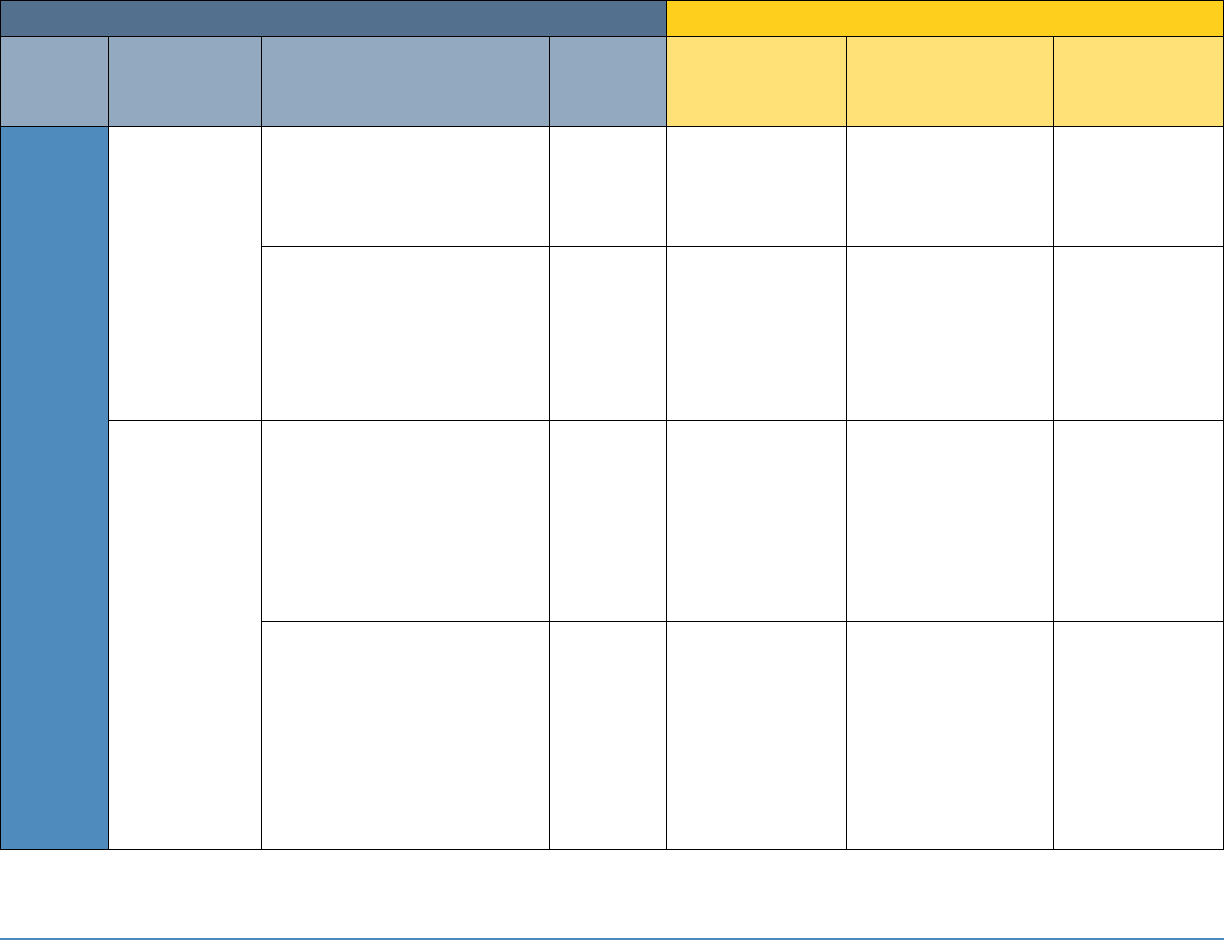
Project Description: Securing Telehealth Remote Patient Monitoring Ecosystem 15
Table 5-1: Security Control Map
NIST Cybersecurity Framework Version 1.1
Sector-Specific Standards and Best Practices
Function
Category
Subcategory
NIST SP
800-53
Revision 4
IEC TR 80001-2-2
HIPAA Security Rule
ISO/IEC 27001
IDENTIFY
(ID)
Asset
Management
(ID.AM)
ID.AM-1: Physical devices and
systems within the
organization are inventoried.
CM-8
Not applicable
45 C.F.R. §§
164.308(a)(1)(ii)(A),
164.310(a)(2)(ii),
164.310(d)
A.8.1.1, A.8.1.2
ID.AM-5: Resources
(e.g., hardware, devices, data,
time, and software) are
prioritized based on their
classification, criticality, and
business value.
CP-2, RA-2,
SA-14
DTBK
45 C.F.R. §
164.308(a)(7)(ii)(E)
A.8.2.1
Risk
Assessment
(ID.RA)
ID.RA-1: Asset vulnerabilities
are identified and
documented.
CA-2, CA-7,
CA-8, RA-3,
RA-5, SA-5,
SA-11, SI-2,
SI-4, SI-5
RDMP
45 C.F.R. §§
164.308(a)(1)(ii)(A),
164.308(a)(7)(ii)(E),
164.308(a)(8),
164.310(a)(1),
164.312(a)(1),
164.316(b)(2)(iii)
A.12.6.1,
A.18.2.3
ID.RA-4: Potential business
impacts and likelihoods are
identified.
RA-2, RA-3,
PM-9,
PM-11,
SA-14
SAHD, SGUD
45 C.F.R. §§
164.308(a)(1)(i),
164.308(a)(1)(ii)(A),
164.308(a)(1)(ii)(B),
164.308(a)(6),
164.308(a)(7)(ii)(E),
164.308(a)(8),
164.316(a)
A.12.6.1,
A.18.2.3
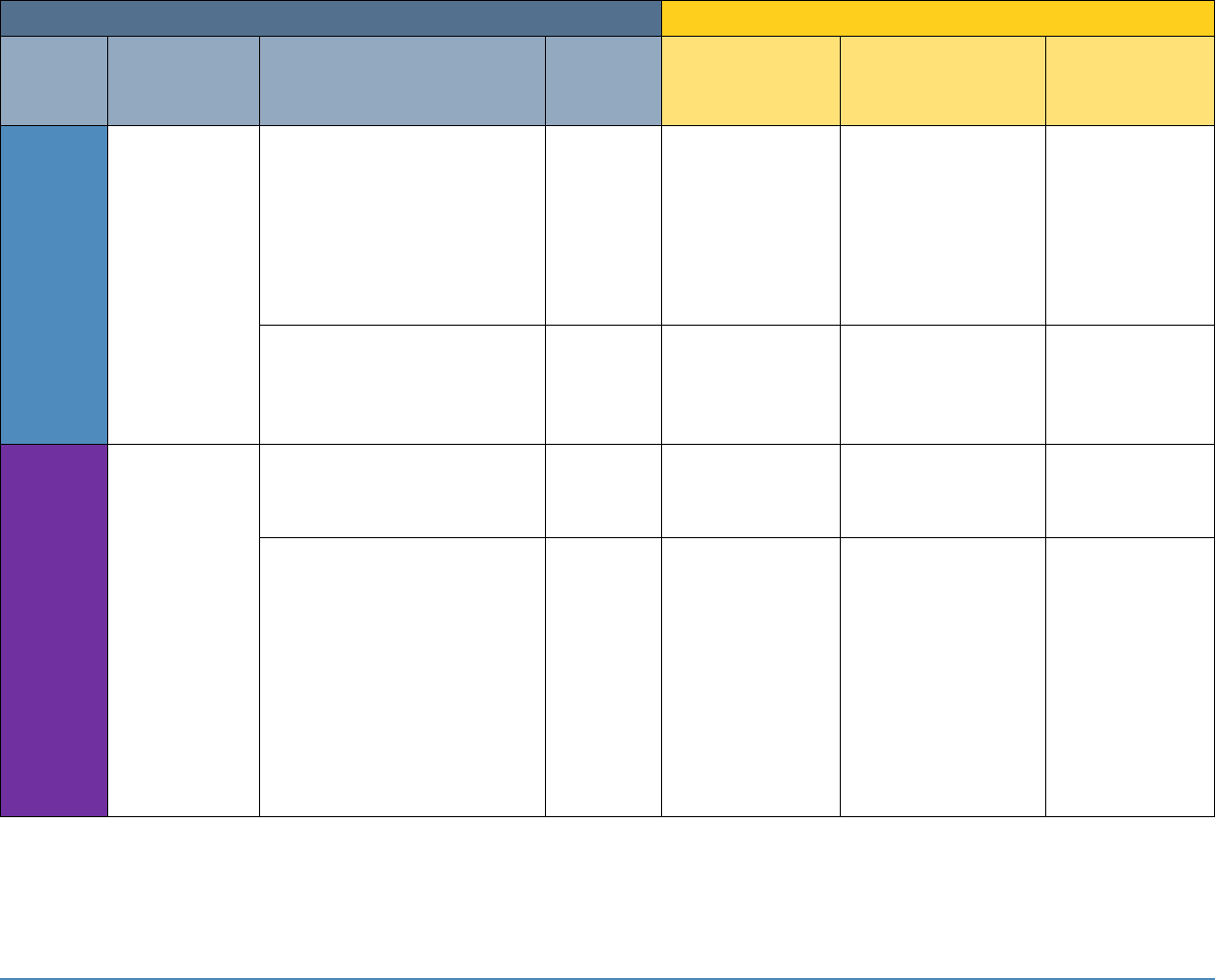
Project Description: Securing Telehealth Remote Patient Monitoring Ecosystem 16
NIST Cybersecurity Framework Version 1.1
Sector-Specific Standards and Best Practices
Function
Category
Subcategory
NIST SP
800-53
Revision 4
IEC TR 80001-2-2
HIPAA Security Rule
ISO/IEC 27001
ID.RA-5: Threats,
vulnerabilities, likelihoods,
and impacts are used to
determine risk.
RA-2, RA-3,
PM-16
SGUD
45 C.F.R. §§
164.308(a)(1)(ii)(A),
164.308(a)(1)(ii)(B),
164.308(a)(1)(ii)(D),
164.308(a)(7)(ii)(D),
164.308(a)(7)(ii)(E),
164.316(a)
None
ID.RA-6: Risk responses are
identified and prioritized.
PM-4,
PM-9
DTBK, SGUD
45 C.F.R. §§
164.308(a)(1)(ii)(B),
164.314(a)(2)(i)(C),
164.314(b)(2)(iv)
None
PROTECT
(PR)
Identity
Management
and Access
Control
(PR.AC)
(Note: not directly mapped in
Cybersecurity Framework)
AC-1,
AC-11,
AC-12
ALOF
Not applicable
None
PR.AC-1: Identities and
credentials are issued,
managed, revoked, and
audited for authorized
devices, users, and processes.
AC-2, IA
Family
AUTH, CNFS,
EMRG, PAUT
45 C.F.R. §§
164.308(a)(3)(ii)(B),
164.308(a)(3)(ii)(C),
164.308(a)(4)(i),
164.308(a)(4)(ii)(B),
164.308(a)(4)(ii)(C),
164.312(a)(2)(i),
164.312(a)(2)(ii),
164.312(a)(2)(iii),
164.312(d)
A.9.2.1, A.9.2.2,
A.9.2.4, A.9.3.1,
A.9.4.2, A.9.4.3
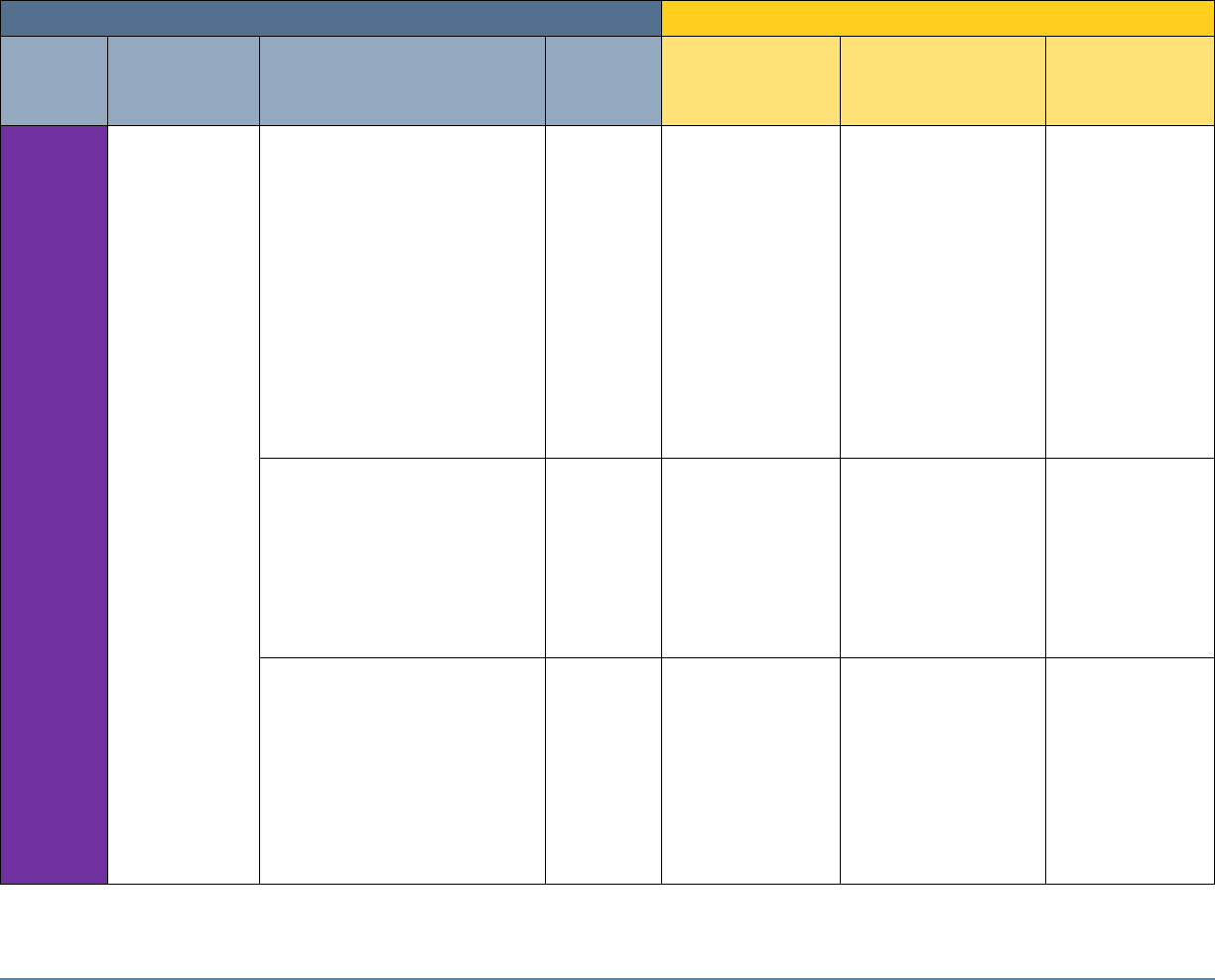
Project Description: Securing Telehealth Remote Patient Monitoring Ecosystem 17
NIST Cybersecurity Framework Version 1.1
Sector-Specific Standards and Best Practices
Function
Category
Subcategory
NIST SP
800-53
Revision 4
IEC TR 80001-2-2
HIPAA Security Rule
ISO/IEC 27001
PR.AC-2: Physical access to
assets is managed and
protected.
PE-2, PE-3,
PE-4, PE-5,
PE-6, PE-9
PLOK, TXCF, TXIG
45 C.F.R. §§
164.308(a)(1)(ii)(B),
164.308(a)(7)(i),
164.308(a)(7)(ii)(A),
164.310(a)(1),
164.310(a)(2)(i),
164.310(a)(2)(ii),
164.310(a)(2)(iii),
164.310(b),
164.310(c),
164.310(d)(1),
164.310(d)(2)(iii)
A.11.1.1,
A.11.1.2,
A.11.1.4,
A.11.1.6,
A.11.2.3
PR.AC-3: Remote access is
managed.
AC-17,
AC-19,
AC-20
NAUT, PAUT
45 C.F.R. §§
164.308(a)(4)(i),
164.308(b)(1),
164.308(b)(3),
164.310(b),
164.312(e)(1),
164.312(e)(2)(ii)
A.6.2.2, A.13.1.1,
A.13.2.1
PR.AC-4: Access permissions
and authorizations are
managed, incorporating the
principles of least privilege
and separation of duties.
AC-2, AC-3,
AC-5, AC-6,
AC-16
AUTH, CNFS,
EMRG, NAUT,
PAUT
45 C.F.R. §§
164.308(a)(3),
164.308(a)(4),
164.310(a)(2)(iii),
164.310(b),
164.312(a)(1),
164.312(a)(2)(i),
164.312(a)(2)(ii)
A.6.1.2, A.9.1.2,
A.9.2.3, A.9.4.1,
A.9.4.4
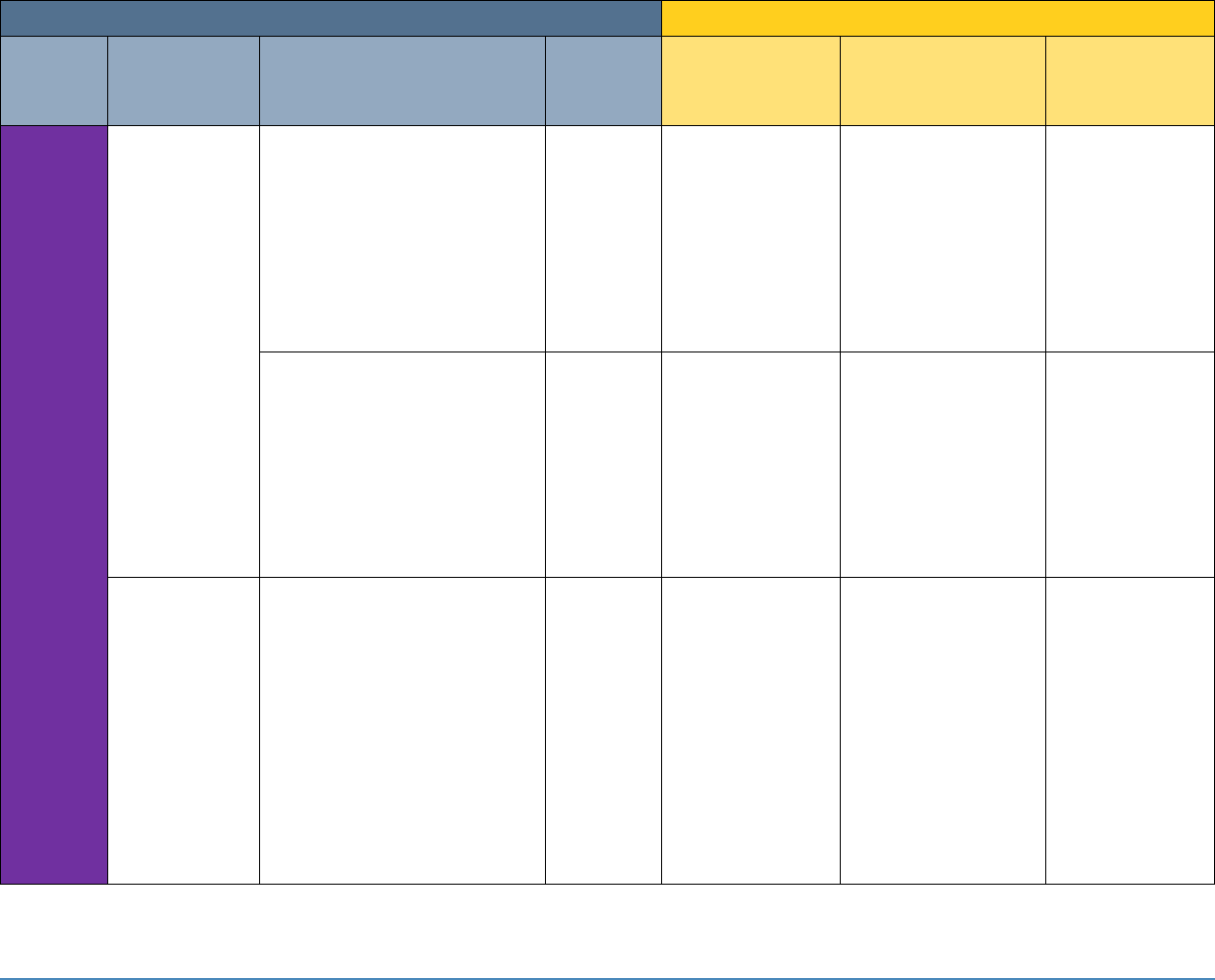
Project Description: Securing Telehealth Remote Patient Monitoring Ecosystem 18
NIST Cybersecurity Framework Version 1.1
Sector-Specific Standards and Best Practices
Function
Category
Subcategory
NIST SP
800-53
Revision 4
IEC TR 80001-2-2
HIPAA Security Rule
ISO/IEC 27001
PR.AC-5: Network integrity is
protected, incorporating
network segregation where
appropriate.
AC-4, SC-7
NAUT
45 C.F.R. §§
164.308(a)(4)(ii)(B),
164.310(a)(1),
164.310(b),
164.312(a)(1),
164.312(b),
164.312(c),
164.312(e)
A.13.1.1,
A.13.1.3,
A.13.2.1
PR.AC-6: Identities are
proofed and bound to
credentials and asserted in
interactions when
appropriate.
AC-2, AC-3,
AC-5, AC-6,
AC-16,
AC-19,
AC-24,
IA-2, IA-4,
IA-5, IA-8,
PE-2, PS-3
AUTH, CNFS,
EMRG, NAUT,
PLOK, SGUD
Not applicable
A.6.1.2, A.7.1.1,
A.9.1.2, A.9.2.2,
A.9.2.3, A.9.2.5,
A.9.2.6, A.9.4.1,
A.9.4.4
Data Security
(PR.DS)
PR.DS-1: Data at rest is
protected.
SC-28
IGAU, STCF
45 C.F.R. §§
164.308(a)(1)(ii)(D),
164.308(b)(1),
164.310(d),
164.312(a)(1),
164.312(a)(2)(iii),
164.312(a)(2)(iv),
164.312(b),
164.312(c),
164.312(d),
164.314(b)(2)(i)
A.8.2.3
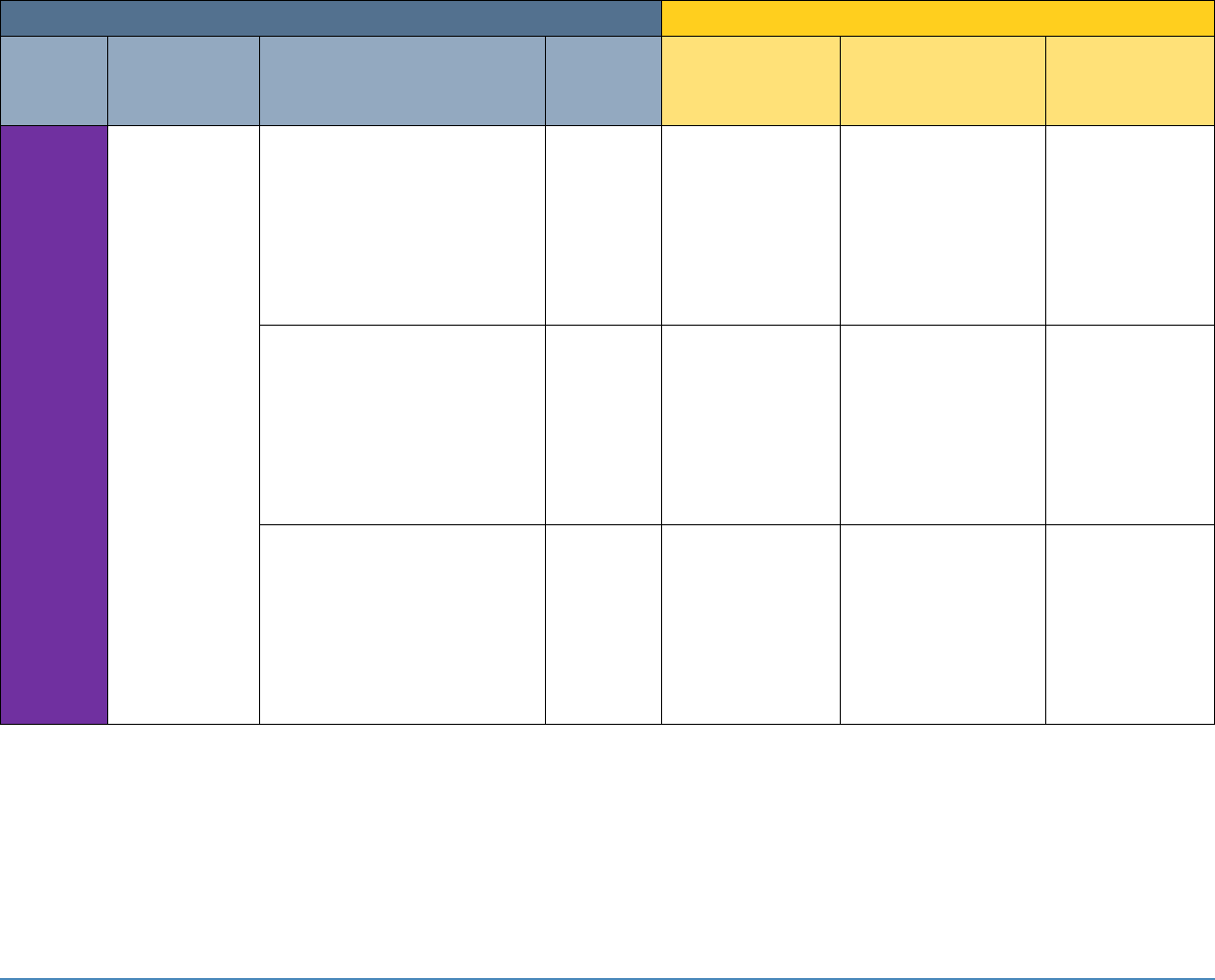
Project Description: Securing Telehealth Remote Patient Monitoring Ecosystem 19
NIST Cybersecurity Framework Version 1.1
Sector-Specific Standards and Best Practices
Function
Category
Subcategory
NIST SP
800-53
Revision 4
IEC TR 80001-2-2
HIPAA Security Rule
ISO/IEC 27001
PR.DS-2: Data in transit is
protected.
SC-8
IGAU, TXCF
45 C.F.R. §§
164.308(b)(1),
164.308(b)(2),
164.312(e)(1),
164.312(e)(2)(i),
164.312(e)(2)(ii),
164.314(b)(2)(i)
A.8.2.3, A.13.1.1,
A.13.2.1,
A.13.2.3,
A.14.1.2,
A.14.1.3
PR.DS-3: Assets are formally
managed throughout
removal, transfers, and
disposition.
CM-8,
MP-6,
PE-16
Not applicable
45 C.F.R. §§
164.308(a)(1)(ii)(A),
164.310(a)(2)(ii),
164.310(a)(2)(iii),
164.310(a)(2)(iv),
164.310(d)(1),
164.310(d)(2)
A.12.3.1
PR.DS-4: Adequate capacity to
ensure availability is
maintained.
AU-4, CP-2,
SC-5
AUDT, DTBK
45 C.F.R. §§
164.308(a)(1)(ii)(A),
164.308(a)(1)(ii)(B),
164.308(a)(7),
164.310(a)(2)(i),
164.310(d)(2)(iv),
164.312(a)(2)(ii)
A.12.3.1
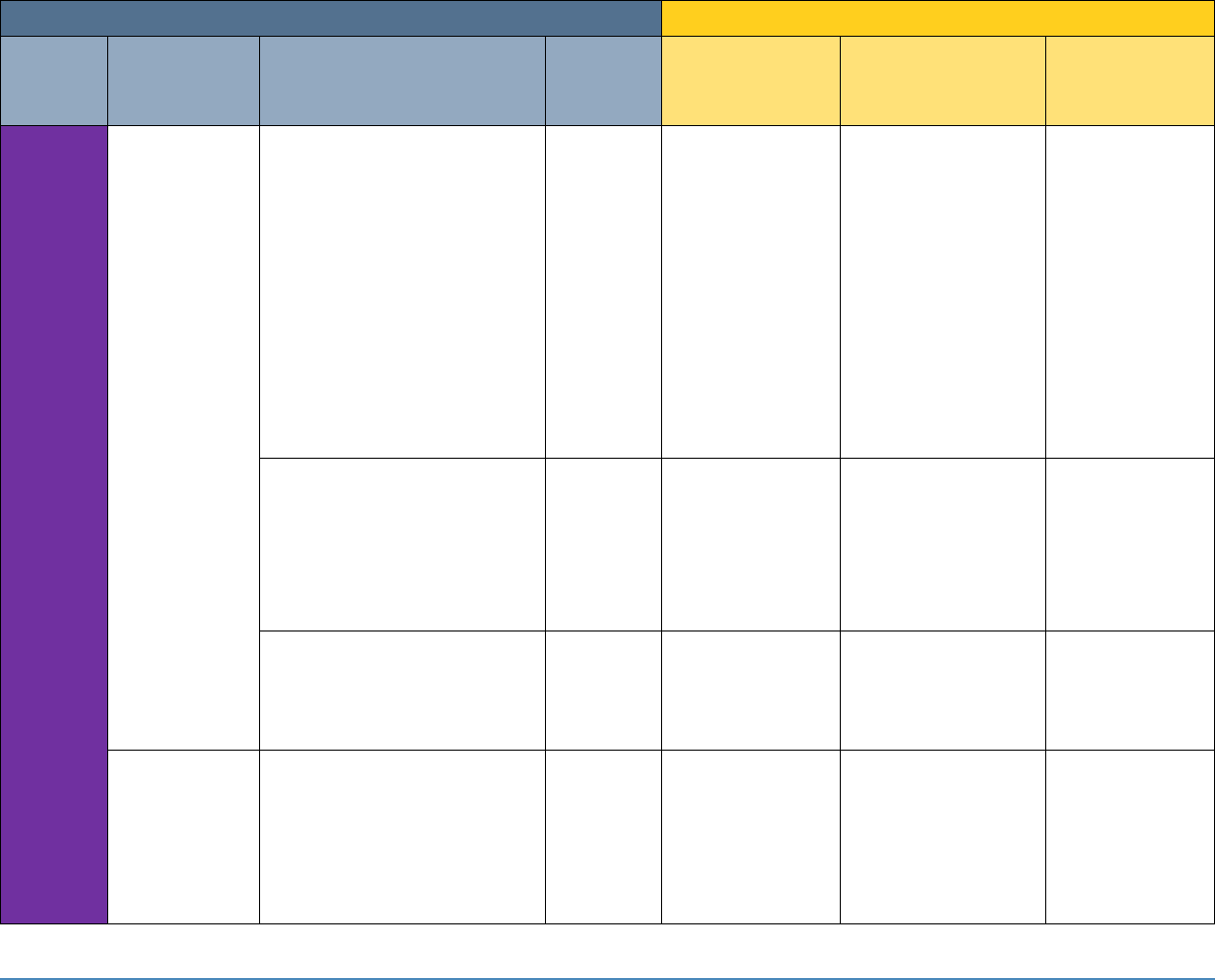
Project Description: Securing Telehealth Remote Patient Monitoring Ecosystem 20
NIST Cybersecurity Framework Version 1.1
Sector-Specific Standards and Best Practices
Function
Category
Subcategory
NIST SP
800-53
Revision 4
IEC TR 80001-2-2
HIPAA Security Rule
ISO/IEC 27001
PR.DS-5: Protections against
data leaks are implemented.
AC-4, AC-5,
AC-6,
PE-19,
PS-3, PS-6,
SC-7, SC-8,
SC-13,
SC-31, SI-4
AUTH, CNFS,
STCF, TXCF, TXIG
45 C.F.R. §§
164.308(a)(1)(ii)(D),
164.308(a)(3),
164.308(a)(4),
164.310(b),
164.310(c),
164.312(a),
164.312(e)
A.6.1.2, A.7.1.1,
A.7.1.2, A.7.3.1,
A.8.2.2, A.8.2.3,
A.9.1.1, A.9.1.2,
A.9.2.3, A.9.4.1,
A.9.4.4, A.9.4.5,
A.13.1.3,
A.13.2.1,
A.13.2.3,
A.13.2.4,
A.14.1.2,
A.14.1.3
PR.DS-6: Integrity checking
mechanisms are used to verify
software, firmware, and
information integrity.
SI-7
IGAU
45 C.F.R. §§
164.308(a)(1)(ii)(D),
164.312(b),
164.312(c)(1),
164.312(c)(2),
164.312(e)(2)(i)
A.12.2.1,
A.12.5.1,
A.14.1.2,
A.14.1.3
PR.DS-7: The development
and testing environment(s)
are separate from the
production environment.
CM-2
CNFS
45 C.F.R. §
164.308(a)(4)
A.12.1.4
Information
Protection
Processes and
Procedures
(PR.IP)
PR.IP-4: Backups of
information are conducted,
maintained, and tested
periodically.
CP-4, CP-6,
CP-9
DTBK
45 C.F.R. §§
164.308(a)(7)(ii)(A),
164.308(a)(7)(ii)(B),
164.308(a)(7)(ii)(D),
164.310(a)(2)(i),
164.310(d)(2)(iv)
A.12.3.1,
A.17.1.2,
A.17.1.3,
A.18.1.3
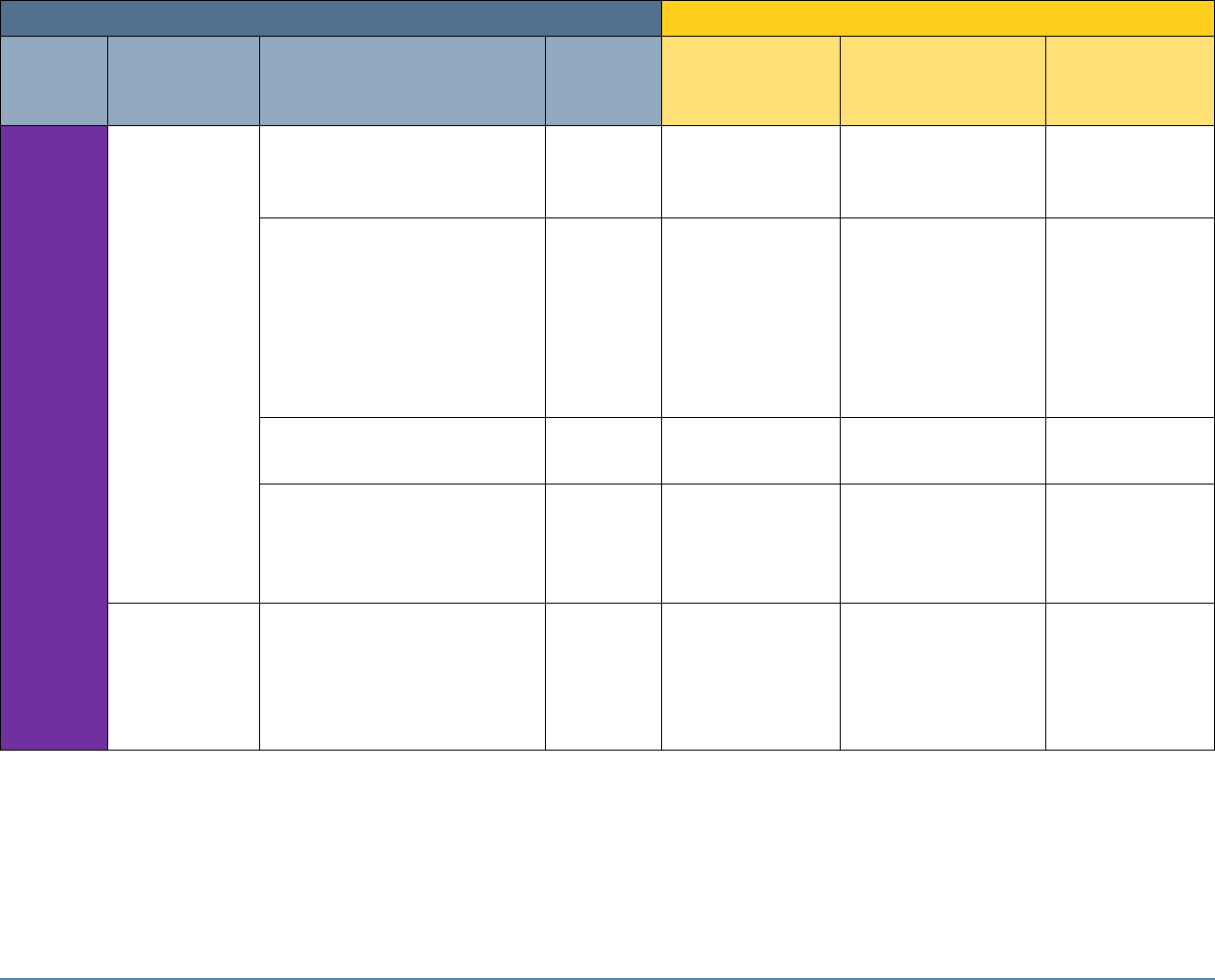
Project Description: Securing Telehealth Remote Patient Monitoring Ecosystem 21
NIST Cybersecurity Framework Version 1.1
Sector-Specific Standards and Best Practices
Function
Category
Subcategory
NIST SP
800-53
Revision 4
IEC TR 80001-2-2
HIPAA Security Rule
ISO/IEC 27001
PR.IP-6: Data is destroyed
according to policy.
MP-6
DIDT
45 C.F.R. §§
164.310(d)(2)(i),
164.310(d)(2)(ii)
A.8.2.3, A.8.3.1,
A.8.3.2, A.11.2.7
PR.IP-9: Response plans
(Incident Response and
Business Continuity) and
recovery plans (Incident
Recovery and Disaster
Recovery) are in place and
managed.
CP-2, IR-8
DTBK
45 C.F.R. §§
164.308(a)(6),
164.308(a)(7),
164.310(a)(2)(i),
164.312(a)(2)(ii)
A.16.1.1,
A.17.1.1,
A.17.1.2
PR.IP-10: Response and
recovery plans are tested.
CP-4, IR-3,
PM-14
DTBK
45 C.F.R. §
164.308(a)(7)(ii)(D)
A.17.1.3
PR.IP-12: A vulnerability
management plan is
developed and implemented.
RA-3, RA-5,
SI-2
MLDP
45 C.F.R. §§
164.308(a)(1)(i),
164.308(a)(1)(ii)(A),
164.308(a)(1)(ii)(B)
A.12.6.1,
A.18.2.2
Maintenance
(PR.MA)
PR.MA-1: Maintenance and
repair of organizational assets
is performed and logged in a
timely manner, with approved
and controlled tools.
MA-2,
MA-3,
MA-5
CSUP, RDMP
45 C.F.R. §§
164.308(a)(3)(ii)(A),
164.310(a)(2)(iv)
A.11.1.2,
A.11.2.4,
A.11.2.5
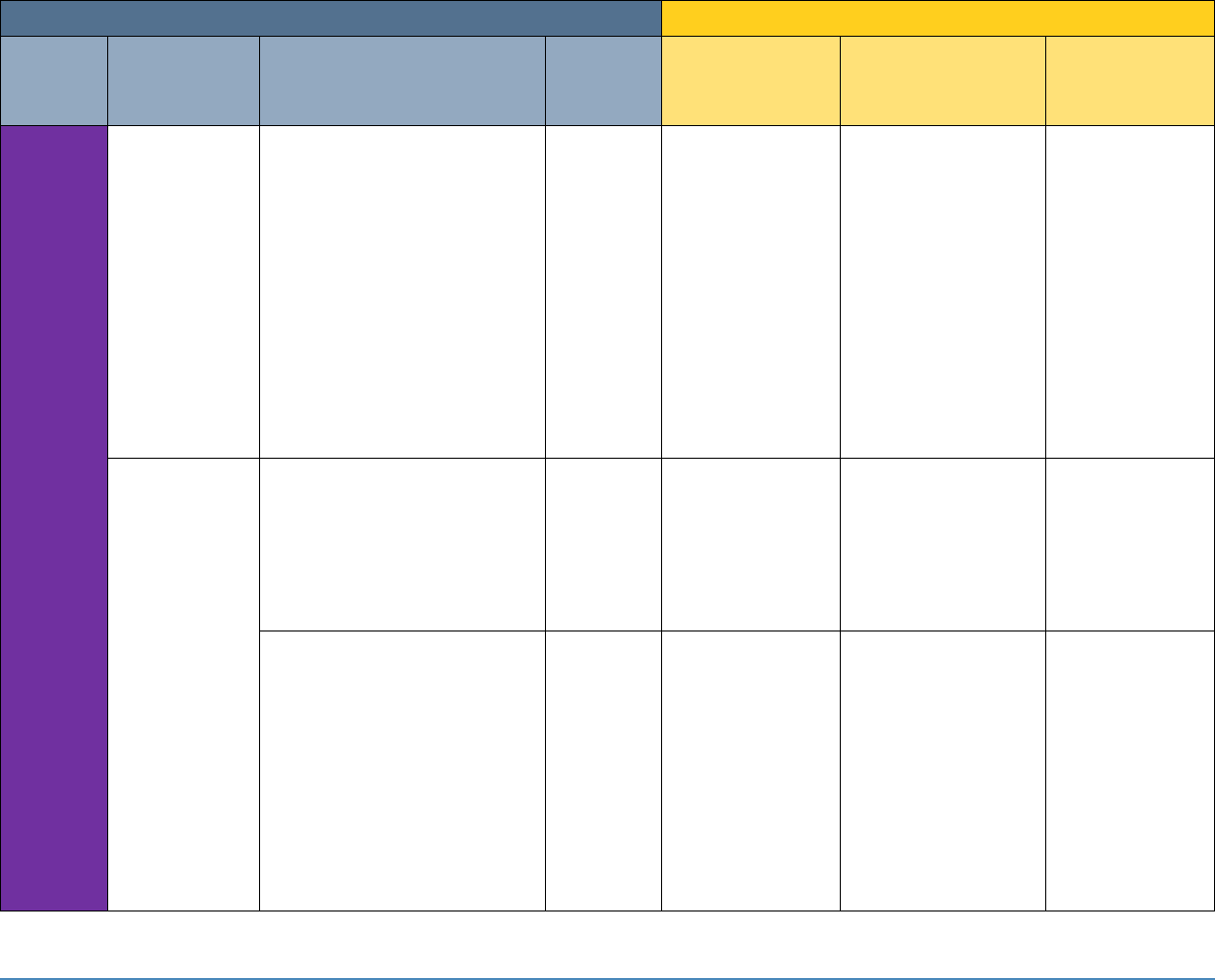
Project Description: Securing Telehealth Remote Patient Monitoring Ecosystem 22
NIST Cybersecurity Framework Version 1.1
Sector-Specific Standards and Best Practices
Function
Category
Subcategory
NIST SP
800-53
Revision 4
IEC TR 80001-2-2
HIPAA Security Rule
ISO/IEC 27001
PR.MA-2: Remote
maintenance of organizational
assets is approved, logged,
and performed in a manner
that prevents unauthorized
access.
MA-4
CSUP
45 C.F.R. §§
164.308(a)(1)(ii)(D),
164.308(a)(3)(ii)(A),
164.310(d)(1),
164.310(d)(2)(ii),
164.310(d)(2)(iii),
164.312(a),
164.312(a)(2)(ii),
164.312(a)(2)(iv),
164.312(b),
164.312(d),
164.312(e)
A.11.2.4,
A.15.1.1,
A.15.2.1
Protective
Technology
(PR.PT)
PR.PT-1: Audit/log records are
determined, documented,
implemented, and reviewed
in accordance with policy.
AC-4,
AC-17,
AC-18,
CP-8, SC-7
AUDT
45 C.F.R. §§
164.308(a)(1)(ii)(D),
164.308(a)(5)(ii)(C),
164.310(a)(2)(iv),
164.310(d)(2)(iii),
164.312(b)
A.12.4.1,
A.12.4.2,
A.12.4.3,
A.12.4.4,
A.12.7.1
PR.PT-3: The principle of least
functionality is incorporated
by configuring systems to
provide only essential
capabilities.
AC-3, CM-7
AUTH, CNFS
45 C.F.R. §§
164.308(a)(3),
164.308(a)(4),
164.310(a)(2)(iii),
164.310(b),
164.310(c),
164.312(a)(1),
164.312(a)(2)(i),
164.312(a)(2)(ii),
164.312(a)(2)(iv)
A.9.1.2
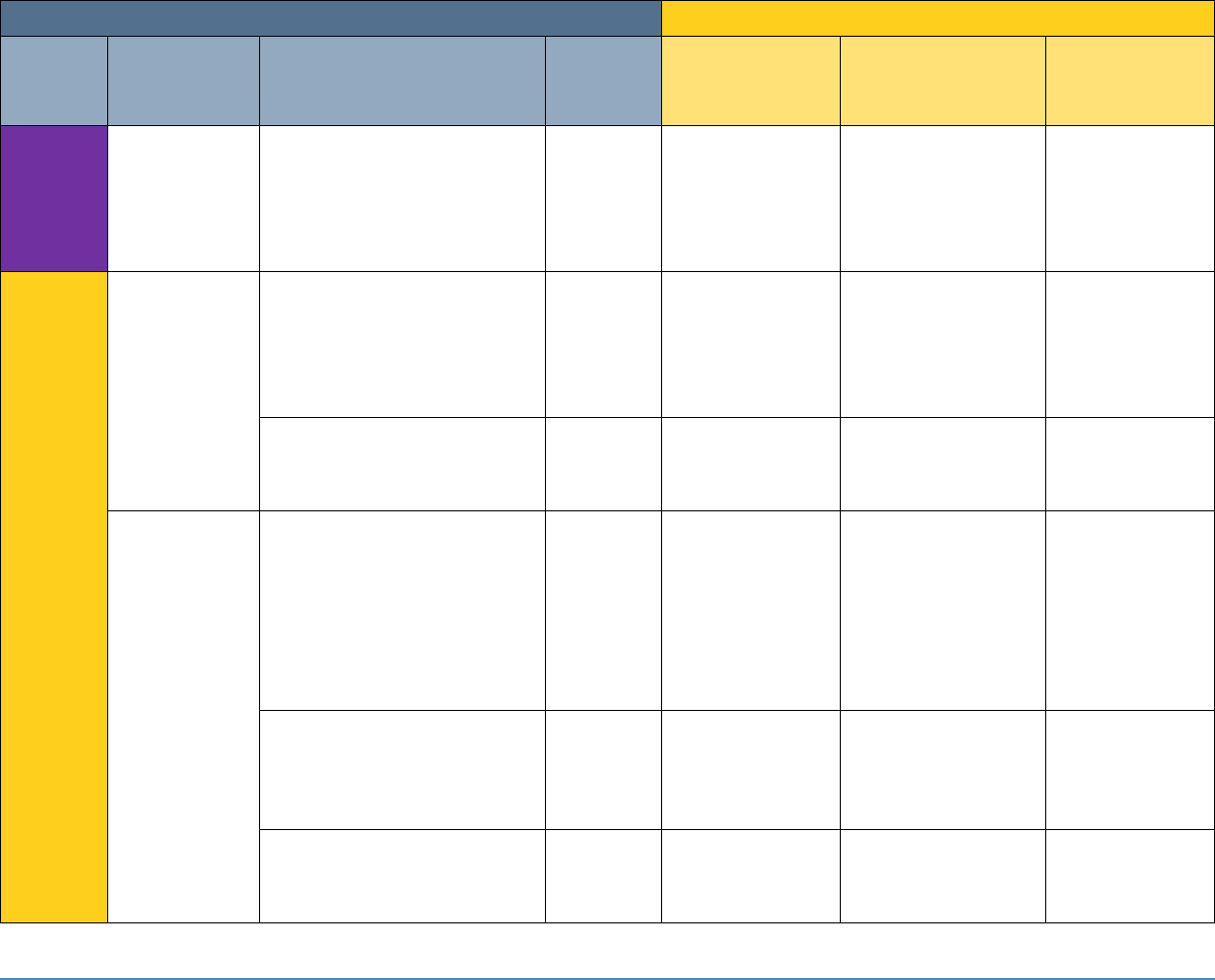
Project Description: Securing Telehealth Remote Patient Monitoring Ecosystem 23
NIST Cybersecurity Framework Version 1.1
Sector-Specific Standards and Best Practices
Function
Category
Subcategory
NIST SP
800-53
Revision 4
IEC TR 80001-2-2
HIPAA Security Rule
ISO/IEC 27001
PR.PT-4: Communications and
control networks are
protected.
AC-4,
AC-17,
AC-18,
CP-8, SC-7
DTBK
45 C.F.R. §§
164.308(a)(1)(ii)(D),
164.312(a)(1),
164.312(b),
164.312(e)
A.13.1.1,
A.13.2.1
DETECT
(DE)
Anomalies and
Events
(DE.AE)
DE.AE-1: A baseline of
network operations and
expected data flows for users
and systems is established
and managed.
AC-4, CA-3,
CM-2, SI-4
AUTH, CNFS
45 C.F.R. §§
164.308(a)(1)(ii)(D),
164.312(b)
None
DE.AE-2: Detected events are
analyzed to understand attack
targets and methods.
CP-2, IR-4,
RA-3, SI-4
DTBK
45 C.F.R. §
164.308(6)(i)
A.16.1.1,
A.16.1.4
Security
Continuous
Monitoring
(DE.CM)
DE.CM-1: The network is
monitored to detect potential
cybersecurity events.
AC-2,
AU-12,
CA-7,
CM-3,
SC-5, SC-7,
SI-4
AUTH, CNFS,
EMRG, MLDP
45 C.F.R. §§
164.308(a)(1)(ii)(D),
164.308(a)(5)(ii)(B),
164.308(a)(5)(ii)(C),
164.308(a)(8),
164.312(b),
164.312(e)(2)(i)
None
DE.CM-2: The physical
environment is monitored to
detect potential cybersecurity
events.
CA-7, PE-3,
PE-6, PE-20
MLDP
45 C.F.R. §§
164.310(a)(2)(ii),
164.310(a)(2)(iii)
None
DE.CM-4: Malicious code is
detected.
SI-3
IGAU, MLDP, TXIG
45 C.F.R. §§
164.308(a)(1)(ii)(D),
164.308(a)(5)(ii)(B)
A.12.2.1
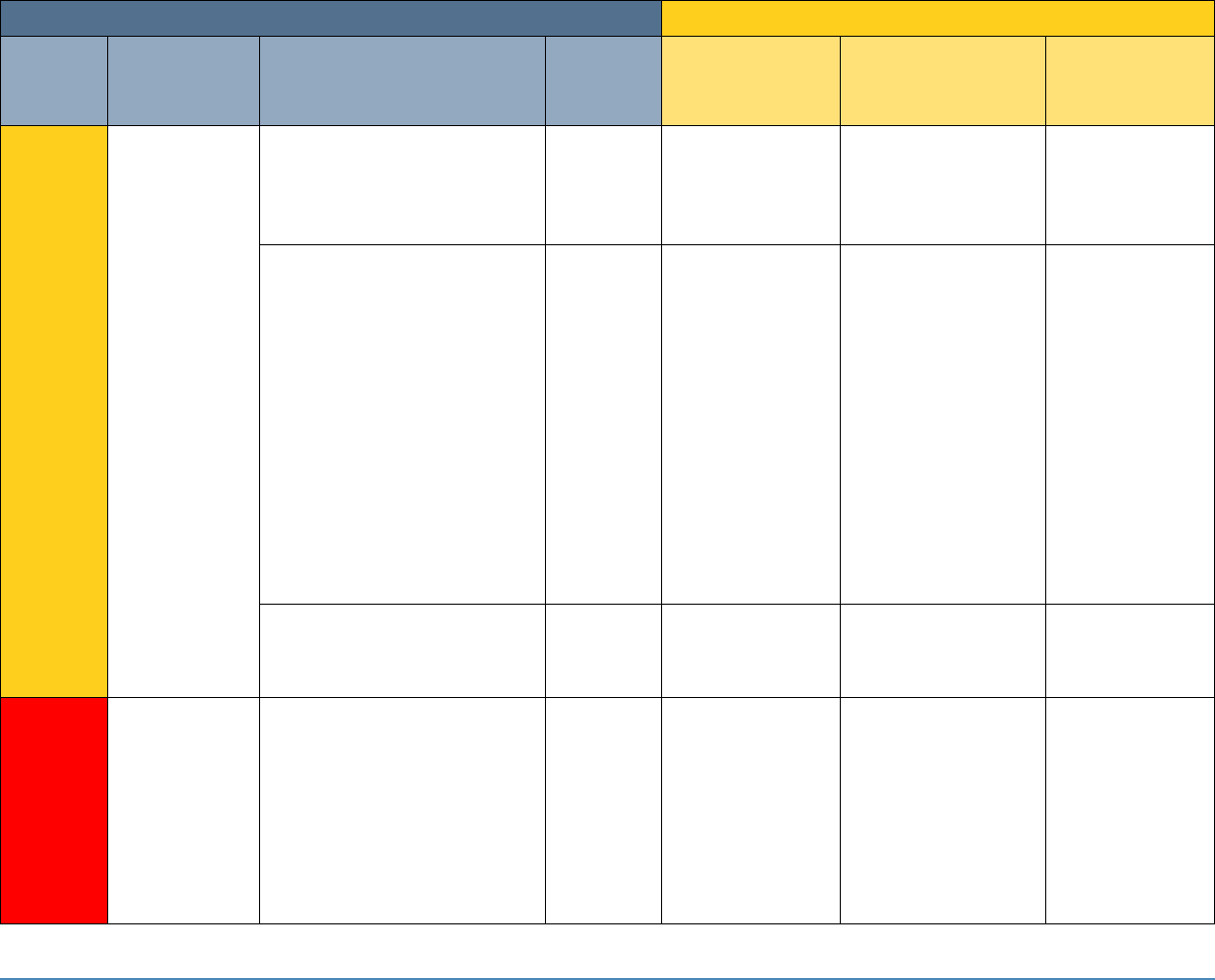
Project Description: Securing Telehealth Remote Patient Monitoring Ecosystem 24
NIST Cybersecurity Framework Version 1.1
Sector-Specific Standards and Best Practices
Function
Category
Subcategory
NIST SP
800-53
Revision 4
IEC TR 80001-2-2
HIPAA Security Rule
ISO/IEC 27001
DE.CM-6: External service
provider activity is monitored
to detect potential
cybersecurity events.
CA-7, PS-7,
SA-4, SA-9,
SI-4
RDMP
45 C.F.R. §
164.308(a)(1)(ii)(D)
A.14.2.7,
A.15.2.1
DE.CM-7: Monitoring for
unauthorized personnel,
connections, devices, and
software is performed.
AU-12,
CA-7,
CM-3,
CM-8,
PE-3, PE-6,
PE-20, SI-4
AUDT, CNFS,
PAUT, PLOK,
MLDP, NAUT,
SGUD
45 C.F.R. §§
164.308(a)(1)(ii)(D),
164.308(a)(5)(ii)(B),
164.308(a)(5)(ii)(C),
164.310(a)(1),
164.310(a)(2)(ii),
164.310(a)(2)(iii),
164.310(b),
164.310(c),
164.310(d)(1),
164.310(d)(2)(iii),
164.312(b),
164.314(b)(2)(i)
None
DE.CM-8: Vulnerability scans
are performed.
RA-5
MLDP
45 C.F.R. §§
164.308(a)(1)(i),
164.308(a)(8)
A.12.6.1
RESPOND
(RS)
Response
Planning
(RS.RP)
RS.RP-1: Response plan is
executed during or after an
event.
CP-2,
CP-10,
IR-4, IR-8
DTBK, SGUD,
MLDP
45 C.F.R. §§
164.308(a)(6)(ii),
164.308(a)(7)(i),
164.308(a)(7)(ii)(A),
164.308(a)(7)(ii)(B),
164.308(a)(7)(ii)(C),
164.310(a)(2)(i),
164.312(a)(2)(ii)
A.16.1.5
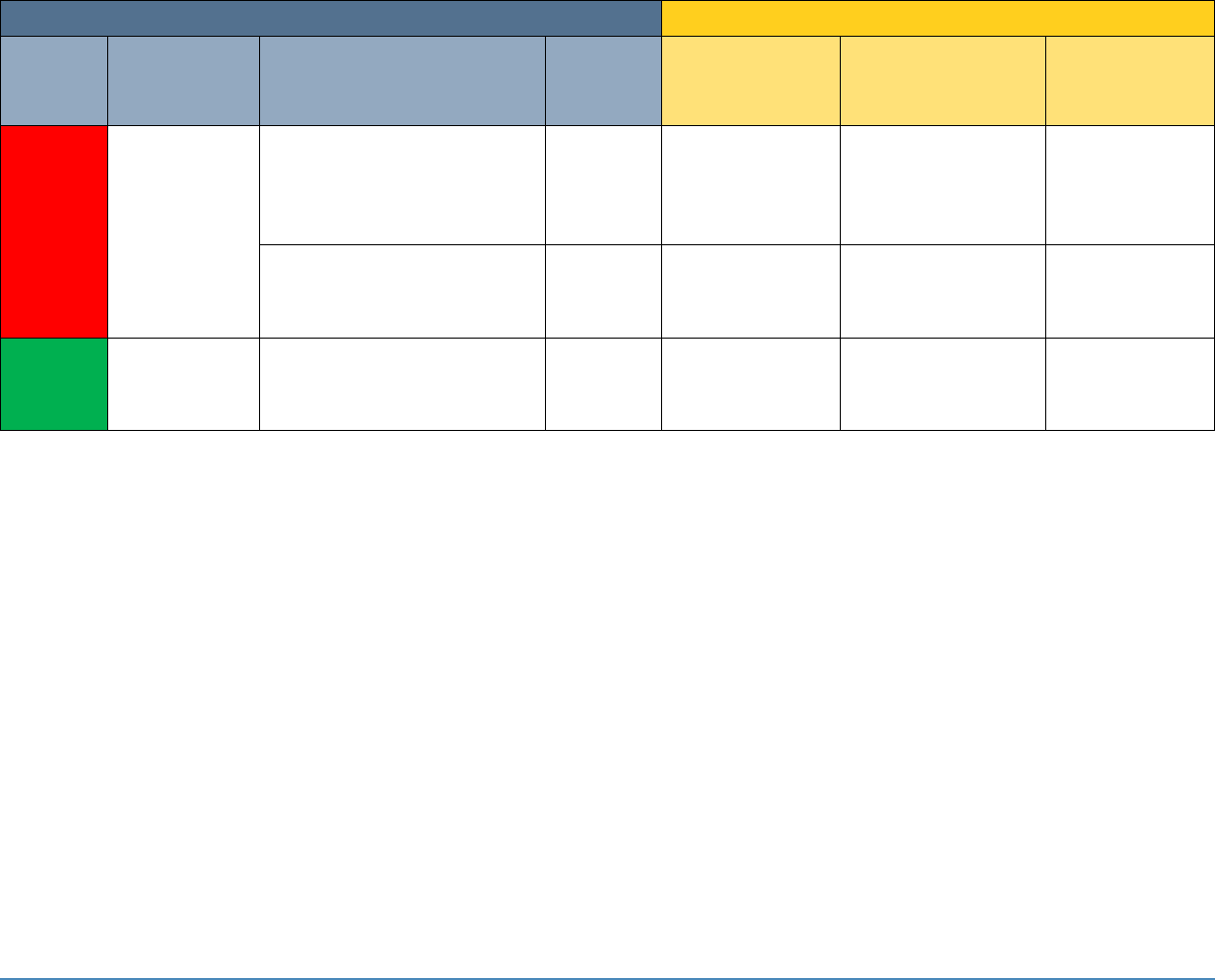
Project Description: Securing Telehealth Remote Patient Monitoring Ecosystem 25
NIST Cybersecurity Framework Version 1.1
Sector-Specific Standards and Best Practices
Function
Category
Subcategory
NIST SP
800-53
Revision 4
IEC TR 80001-2-2
HIPAA Security Rule
ISO/IEC 27001
Improvements
(RS.IM)
RS.IM-1: Response plans
incorporate lessons learned.
CP-2, IR-4,
IR-8
DTBK
45 C.F.R. §§
164.308(a)(7)(ii)(D),
164.308(a)(8),
164.316(b)(2)(iii)
A.16.1.6
RS.IM-2: Response strategies
are updated.
CP-2, IR-4,
IR-8
DTBK
45 C.F.R. §§
164.308(a)(7)(ii)(D),
164.308(a)(8)
None
RECOVER
(RC)
Recovery
Planning
(RC.RP)
RC.RP-1: Recovery plan is
executed during or after an
event.
CP-10,
IR-4, IR-8
DTBK
45 C.F.R. §§
164.308(a)(7),
164.310(a)(2)(i)
A.16.1.5

Project Description: Securing Telehealth Remote Patient Monitoring Ecosystem 26
APPENDIX A REFERENCES
[1] Foley & Lardner LLP, “2017 Telemedicine and Digital Health Survey: Telemedicine Surges
Ahead as Providers, Patients Embrace Technology,” 2017.
Available: https://www.foley.com/files/uploads/2017-Telemedicine-Survey-Report-11-
8-17.pdf.
[2] Maryland Health Care Commission, “Remote Patient Monitoring Telehealth Grants: Brief
and Final Reports,” Mar. 2017.
Available: http://mhcc.maryland.gov/mhcc/pages/hit/hit_telemedicine/documents/Tele
health_Brief_Reports_FINAL_031617.pdf.
[3] G. O’Brien et al., Securing Electronic Health Records on Mobile Devices, National
Institute of Standards and Technology (NIST) Special Publication (SP) 1800-1,
Gaithersburg, Md., Jul. 2018.
Available: https://www.nccoe.nist.gov/sites/default/files/library/sp1800/hit-ehr-nist-
sp1800-1.pdf.
[4] G. O’Brien et al., Securing Wireless Infusion Pumps in Healthcare Delivery Organizations,
NIST SP 1800-8, Gaithersburg, Md., Aug. 2018.
Available: https://www.nccoe.nist.gov/sites/default/files/library/sp1800/hit-wip-nist-
sp1800-8.pdf.

Project Description: Securing Telehealth Remote Patient Monitoring Ecosystem 27
APPENDIX B ACRONYMS AND ABBREVIATIONS
AAMI
Association for Advancement of Medical Instrumentation
API
Application Programming Interface
BMI
Body Mass Index
DE
Detect
FDA
Food and Drug Administration
FIPS
Federal Information Processing Standard
GRC
Governance, Risk, and Compliance
HDO
Health Delivery Organization
HHS
Department of Health and Human Services
HIPAA
Health Insurance Portability and Accountability Act
ID
Identify
IdAM
Identity and Access Management
IDS
Intrusion Detection System
IEC
International Electrotechnical Commission
IPS
Intrusion Prevention System
ISO
International Organization for Standardization
IT
Information Technology
NCCoE
National Cybersecurity Center of Excellence
NIST
National Institute of Standards and Technology
PAM
Privileged Access Management
PR
Protect
RC
Recover
RPM
Remote Patient Monitoring
RS
Respond
SDK
Software Development Kit
SP
Special Publication
TR
Technical Report
VPN
Virtual Private Network
